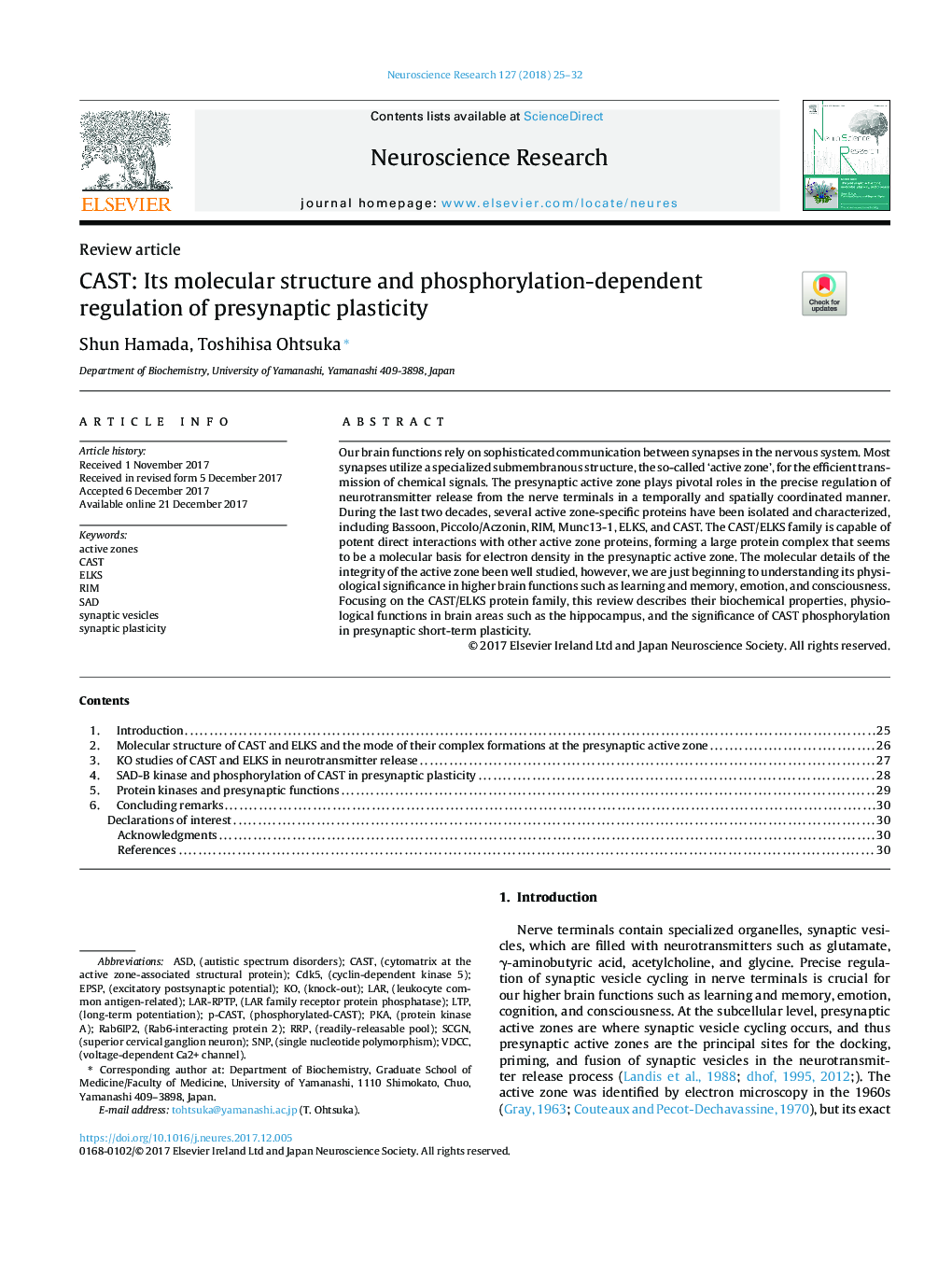| Article ID | Journal | Published Year | Pages | File Type |
|---|---|---|---|---|
| 8842113 | Neuroscience Research | 2018 | 8 Pages |
Abstract
Our brain functions rely on sophisticated communication between synapses in the nervous system. Most synapses utilize a specialized submembranous structure, the so-called 'active zone', for the efficient transmission of chemical signals. The presynaptic active zone plays pivotal roles in the precise regulation of neurotransmitter release from the nerve terminals in a temporally and spatially coordinated manner. During the last two decades, several active zone-specific proteins have been isolated and characterized, including Bassoon, Piccolo/Aczonin, RIM, Munc13-1, ELKS, and CAST. The CAST/ELKS family is capable of potent direct interactions with other active zone proteins, forming a large protein complex that seems to be a molecular basis for electron density in the presynaptic active zone. The molecular details of the integrity of the active zone been well studied, however, we are just beginning to understanding its physiological significance in higher brain functions such as learning and memory, emotion, and consciousness. Focusing on the CAST/ELKS protein family, this review describes their biochemical properties, physiological functions in brain areas such as the hippocampus, and the significance of CAST phosphorylation in presynaptic short-term plasticity.
Keywords
Related Topics
Life Sciences
Neuroscience
Neuroscience (General)
Authors
Shun Hamada, Toshihisa Ohtsuka,
